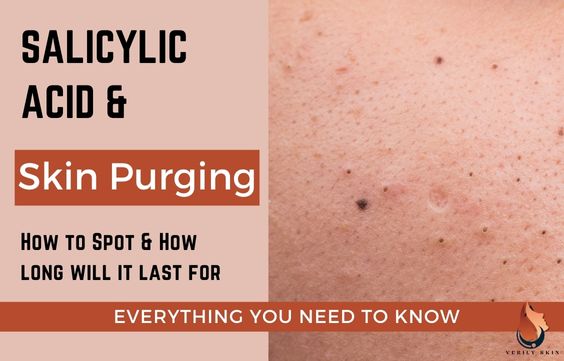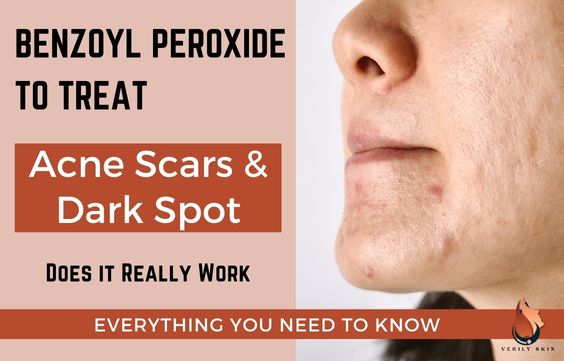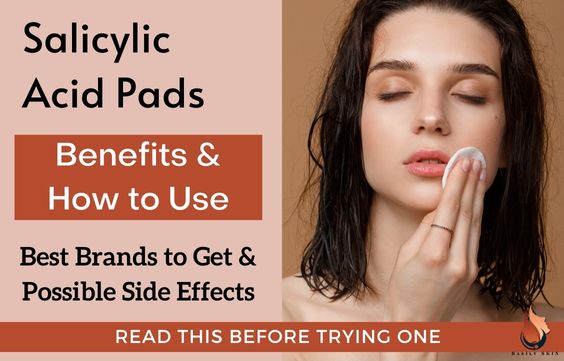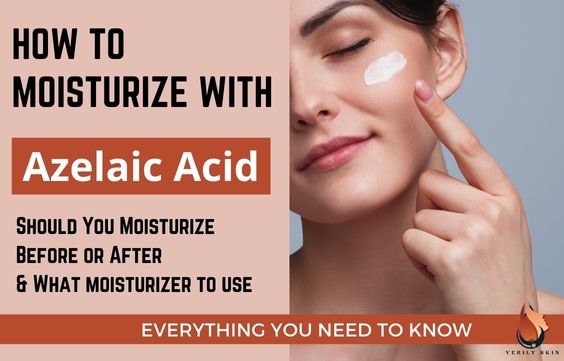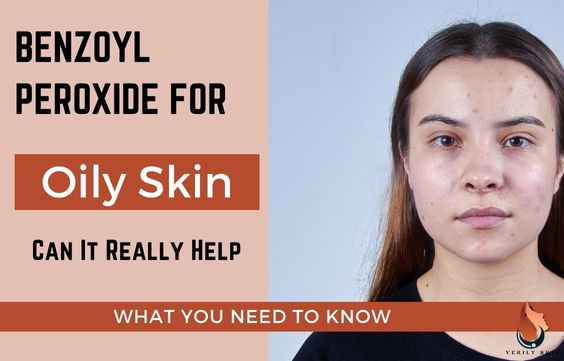Salicylic Acid For Oily Skin – What You Need To Know
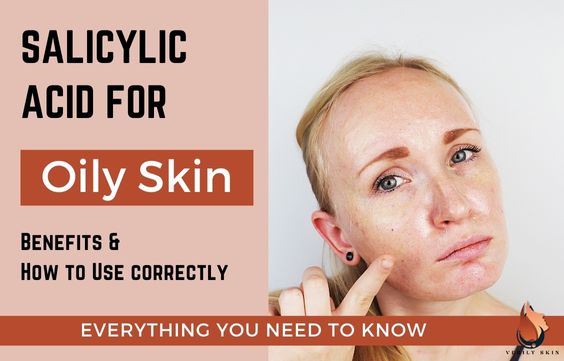
Salicylic acid (SA) has been known as the magic ingredient for oily and acne-prone skin.
It is a beta-hydroxy acid that can penetrate deep into the layers of the skin and the pores. SA breaks apart clumps and brings impurities to the surface. It is also an amazing exfoliant, but it is not suitable for all kinds of skin.
Is Salicylic Acid Suitable For Oily Skin
Yes, salicylic acid is great for oily skin as it dissolves oil from deep within the skin.
Overactive sebaceous glands (the oil-producing glands of the skin) are a common feature of both oily skin and acne-prone skin.
Generally, oily skin is genetic, but it gets worse because of various things such as:
- Diet
- Stress
- Lack of sleep
- Hormones
- Harsh or unsuitable skincare ingredients
- Climate and other environmental conditions
Benefits of Salicylic Acid For Oily Skin
1- Unblocks pores
Salicylic acid can aid by clearing the pores and preventing the development of pimples. The pores may freely discharge oil for a better, more regulated oil flow when there aren’t too many extra dead skin cells present.
One of the potential side effects of using salicylic acid on oily skin is Skin Purging from Salicylic Acid: How to Spot & Treat
2- Regulates Oil Flow
Skin that is dry can sometimes overcompensate by producing too much oil. Salicylic acid can help by regulating oil flow through the skin.
3- Penetrates the lipid layer of the skin
Salicylic acid is lipid soluble. This means that it can penetrate the lipid layer of the skin to clean and exfoliate deeply. This gets rid of excess oil from everywhere in the skin.
4- Tightens the skin
Salicylic acid tightens the pores, controlling the amount of oil they can facilitate. This also makes it less likely for them to become clogged.
Related Article: Best Salicylic Acid Soaps – Benefits, Risks & How To Use
Side Effects Of Salicylic Acid For Oily Skin
The major side effect of salicylic acid is that it can cause your skin to become too dry and irritated.
Even if you have oily skin, when you overuse salicylic acid or if you use a concentration that is too strong for you, you may cause your skin to become too dry. This will worsen your oiliness (over-compensation) or it will irritate your skin to the point of cracking and flaking.
In the case of chemical peels, if you use a concentration of acid that is too strong for you, you may suffer from chemical burns. However, if you have your peel done professionally or with proper guidance, this can be avoided.
7 Reasons Salicylic Acid can make Acne Worse & What to Do
Can Salicylic Acid Be Used As An Oily Skin Treatment
Yes, salicylic acid can be used to treat oily skin, but it can also cause dryness if overused.
If you have oily skin, your best bet would be to consult your dermatologist for guidance.
Along with salicylic acid, you may also need to make changes in your diet and lifestyle that can also significantly help with your oily skin.
However, while salicylic acid is great for oily skin and to treat and/or prevent acne, it can be drying for your skin when used too often or in concentrations that are too high for your skin.
Moisturizing After Salicylic Acid: What To Do & Use
How Much Salicylic Acid Is Need For Oily Skin
The concentration of salicylic acid and the frequency of use that will be necessary to treat oily skin will vary for each person.
Remember that everyone’s skin is different and what works for one person will not necessarily work for you.
You may need to have your salicylic acid treatment tailored to suit your skin (ie. a different concentration at a different frequency) to best help with the oiliness.
Video: How salicylic acid works in your skincare
How To Use Salicylic Acid For Oily Skin
To manage oily skin, salicylic acid works best when incorporated into a cleanser, toner, serum, or spot treatment.
- If you have widespread oily skin, the key is to apply salicylic acid all over your face (except around your eyes and on your lips). Since it is an exfoliant, it is best used on all your oily surfaces.
- On the other hand, if you only get excessively oily in certain areas of your face (like your T zone) it would be best to use salicylic acid in a formulation you can easily control (like a serum or ointment). You can apply it only to those areas where you need it.
How to Use Salicylic Acid for Oily & Sensitive skin
If you have very sensitive skin, using salicylic acid may dry out your skin and cause peeling and irritation. Pay attention to your skin and alter the frequency at which you use it to suit your skin’s tolerance level.
Most dermatologists recommended starting slowly (once per week) and gradually increasing the frequency until you are using it daily. This gives your skin time to adjust to the treatment, will help to manage any purging that may occur, and will prevent any side effects.
Depending on where in your routine you are using salicylic acid, the concentration being used, your skin’s tolerance, and how bad your oily skin is, you may be directed to use salicylic acid at least once per day. This may vary (be less or more) for each person.
Remember not to use salicylic acid with any other acid products or exfoliants without consulting your dermatologist or skincare professional first.
And finally, always do a patch test first and always use sunscreen!
Salicylic Acid For Dark Underarms: What You Need to Know
Best Salicylic Acid Products For Oily Skin
1- La Roche-Posay Effaclar Medicated Gel Facial Cleanser
This cleanser is medicated with 2% salicylic acid that effectively targets excess oil and even helps with acne. It also contains glycerin, which is a humectant that keeps the skin hydrated.
Click here to see the current price for the La Roche-Posay Effaclar Medicated Cleanser on Amazon.
2- CeraVe Renewing SA Cleanser
This is a gentle cleanser with a healthy concentration of salicylic acid to help manage oily skin, as well as ceramides to prevent over-drying. It can be used daily and will not irritate the skin.
Click here to check out the CeraVe Renewing SA Cleanser on Amazon.
3- Paula’s Choice Skin Perfecting 2% BHA Toner
This toner is said to be designed to penetrate the skin deeply to dissolve and dislodge any buildup of dirt, sweat, and excess sebum. This makes it a great choice for oily skin but while it is non-abrasive, it is best to use it a few times a week rather than every day.
Click here to see the Paula’s Choice Skin Perfecting 2% BHA Toner on Amazon.
4- La Roche-Posay Effaclar Clarifying Solution
This is a more gentle formulation that can be used on oily skin once or twice a day to manage oiliness and prevent acne. It is gentle enough to be suitable for sensitive skin without over-drying.
Click here to check out the La Roche-Posay Effaclar Clarifying Solution on Amazon.
5- The Inkey List Beta Hydroxy Acid (BHA) Serum
Anyone who struggles with oily skin, blackheads, or any type of acne should try this. This serum uses zinc PCA and 2% salicylic acid to stop acne in its tracks by preventing the production of too much oil.
Click here to view The Inkey List Beta Hydroxy Acid (BHA) on Amazon.
6- Paula’s Choice RESIST Pore-Refining Treatment 4% BHA Serum
A more concentrated serum that is effective for oily skin is this pore-refining formulation by Paula’s Choice. It should retexturize oily skin making it clearer and much less prone to acne formation in your oily areas.
Click here to see the Paula’s Choice RESIST Treatment 4% BHA Serum on Amazon.
Sources:
Guide to Salicylic Acid for Oily Skin Prone to Mild Acne | CeraVe® Australia
Salicylic acid: what it is, benefits and how to use it in your skin routine


